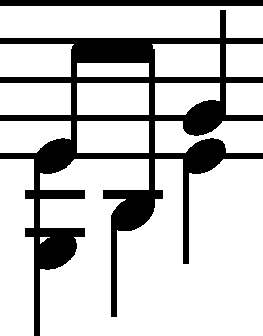



Rhythm
|
b. 25-30
|
composition: Op. 11, Concerto in E minor, Mvt I
..
We give the dotted rhythms on the last beats of bars 25, 29 and 30 after Atut (→FE→GE,EE). In the orchestral part, there are pairs of quavers in violin I. category imprint: Source & stylistic information |
|||||
|
b. 27-28
|
composition: Op. 11, Concerto in E minor, Mvt I category imprint: Source & stylistic information issues: Uncertain notes on ledger lines |
|||||
|
b. 33
|
composition: Op. 11, Concerto in E minor, Mvt I
..
In FE, the dots prolonging the F category imprint: Interpretations within context; Differences between sources issues: EE revisions , Errors in FE , GE revisions |
|||||
|
b. 61
|
composition: Op. 11, Concerto in E minor, Mvt I
..
Chopin would gradually shape the notation of the R.H. part in the first half of this bar. Initially, he tried to write down the "harmonic legato" – holding the elements of the chord constituting the figuration with fingers – through rhythmic values: category imprint: Differences between sources; Corrections & alterations issues: Corrections in A , Authentic corrections of FE |
|||||
|
b. 65-74
|
composition: Op. 11, Concerto in E minor, Mvt I
..
Nothing indicates that the ties sustaining the b1 crotchets in bars 65-66 and 73-74 could have come from Chopin. Theoretically, they could have been added by Fontana, who could perhaps recall Chopin's performances; this possibility allows for qualifying this version as, at most, a variant of questionable authenticity. If the composer wanted to sustain these notes, it would be difficult to explain why he did not mark it while writing Atut, proofreading FE (at least twice) or listening to pupils' performances. category imprint: Differences between sources issues: EE revisions |

 -f
-f

 or
or  . It was still in
. It was still in 
